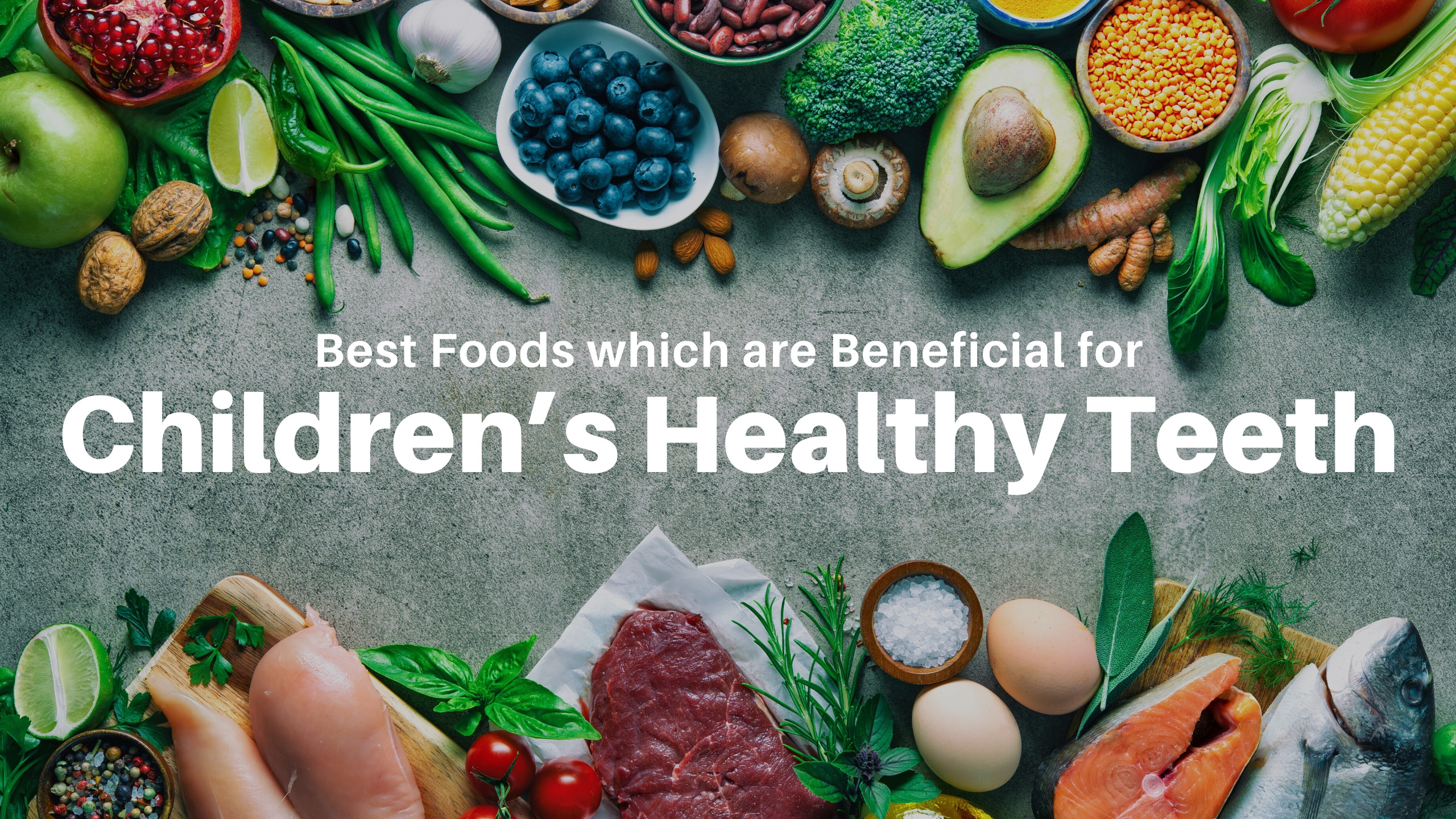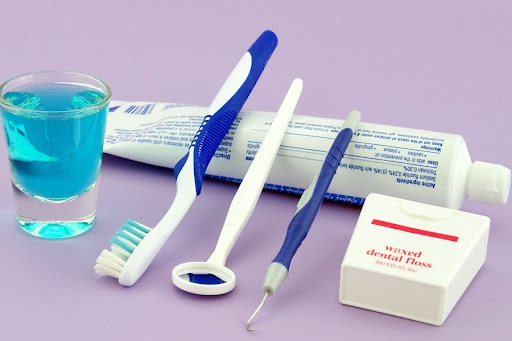Healthy Diet Choices for Stronger Teeth in Children

Good nutrition plays a vital role in maintaining your child’s overall health, including their dental health. While brushing and flossing are essential for preventing cavities and gum disease, a balanced diet rich in tooth-friendly foods can significantly enhance your child’s oral health. This guide explores the best dietary choices for stronger teeth in children, highlighting the key nutrients, beneficial foods, and practical tips for parents to ensure their kids’ teeth grow healthy and strong.
1. The Importance of Diet in Oral Health
Diet is a crucial factor in your child’s dental development and health. Foods that are high in sugars and acids can contribute to tooth decay, while those rich in essential vitamins and minerals support the development of strong teeth and gums. Teaching your children to make healthy food choices can set them on a path to long-term dental health and overall well-being.
How Diet Affects Dental Health
- Tooth Decay and Sugary Foods: Foods high in sugars, such as candy, cookies, and sugary drinks, feed harmful bacteria in the mouth. These bacteria produce acids that erode tooth enamel, leading to cavities.
- Acidic Foods and Enamel Erosion: Acidic foods and beverages, like soda, citrus fruits, and vinegar, can weaken tooth enamel, making teeth more susceptible to decay.
- Nutrient Deficiencies: Lack of essential nutrients, such as calcium and vitamin D, can lead to weaker teeth and gums, increasing the risk of dental issues.
2. Key Nutrients for Stronger Teeth
Certain nutrients are essential for maintaining strong and healthy teeth in children. Incorporating these nutrients into your child’s diet can help fortify their teeth and prevent common dental problems.
Calcium: Building Block of Strong Teeth
- Role of Calcium: Calcium is vital for the development and maintenance of strong teeth and bones. It helps harden the enamel, the protective outer layer of the teeth, making it more resistant to decay.
- Sources of Calcium: Milk, cheese, yogurt, leafy green vegetables (such as spinach and kale), almonds, and fortified foods like orange juice and cereals are excellent sources of calcium.
Vitamin D: Enhancing Calcium Absorption
- Role of Vitamin D: Vitamin D is crucial for the absorption of calcium in the body. Without adequate vitamin D, the calcium in your child’s diet may not be effectively utilized, leading to weaker teeth.
- Sources of Vitamin D: Sunlight exposure is the best natural source of vitamin D. Dietary sources include fatty fish (like salmon and mackerel), egg yolks, fortified milk, and vitamin D supplements if recommended by a healthcare provider.
Phosphorus: Partner in Enamel Strengthening
- Role of Phosphorus: Phosphorus works alongside calcium to build strong bones and teeth. It helps in the formation of tooth enamel and repairs minor enamel damage.
- Sources of Phosphorus: Meat, poultry, fish, dairy products, nuts, seeds, and whole grains are good sources of phosphorus.
Vitamin C: Gum Health Guardian
- Role of Vitamin C: Vitamin C is important for the health of gums and other soft tissues in the mouth. It helps prevent gum inflammation and bleeding by supporting the blood vessels and connective tissues that hold teeth in place.
- Sources of Vitamin C: Citrus fruits (such as oranges and grapefruits), strawberries, bell peppers, broccoli, and tomatoes are rich in vitamin C.
Fluoride: Natural Enamel Protector
- Role of Fluoride: Fluoride strengthens tooth enamel and helps prevent cavities by making teeth more resistant to acid attacks from plaque bacteria and sugars.
- Sources of Fluoride: Fluoridated water, toothpaste, and mouth rinses are common sources of fluoride. Some foods, like tea and seafood, also contain small amounts of fluoride.
Vitamin A: Promoting Saliva Production
- Role of Vitamin A: Vitamin A supports healthy saliva production, which is essential for maintaining a clean mouth and neutralizing harmful acids. Saliva also provides minerals that help rebuild enamel.
- Sources of Vitamin A: Carrots, sweet potatoes, spinach, kale, and other orange and green vegetables are excellent sources of vitamin A.
3. Tooth-Friendly Foods for Children
Including a variety of tooth-friendly foods in your child’s diet can promote strong teeth and healthy gums. Here are some of the best food choices to incorporate into daily meals and snacks.
Dairy Products: Calcium-Rich Choices
- Milk, Cheese, and Yogurt: Dairy products are high in calcium and phosphorus, which help strengthen teeth and bones. Cheese also stimulates saliva production, which aids in neutralizing acids in the mouth.
- Plain Yogurt: Choose unsweetened or lightly sweetened yogurt to avoid excess sugar. Yogurt is also rich in probiotics, which can benefit oral health by balancing the bacteria in the mouth.
Crunchy Fruits and Vegetables: Natural Teeth Cleaners
- Apples, Carrots, and Celery: These crunchy foods act as natural toothbrushes, helping to scrub away food particles and plaque from teeth. They also stimulate saliva production, which helps protect teeth from decay.
- Broccoli and Cucumber: These vegetables are high in water content and low in sugars, making them ideal snacks for maintaining healthy teeth.
Nuts and Seeds: Mineral Boosters
- Almonds, Cashews, and Sunflower Seeds: Nuts and seeds are rich in calcium, phosphorus, and other minerals that support tooth health. They also provide a satisfying crunch without the sugars found in many other snacks.
Lean Proteins: Enamel Supporters
- Chicken, Fish, and Eggs: Lean proteins are good sources of phosphorus and other nutrients that strengthen tooth enamel. Omega-3 fatty acids found in fatty fish also help reduce inflammation and promote gum health.
Whole Grains: Balanced Nutrition
- Oatmeal, Brown Rice, and Whole Wheat Bread: Whole grains provide essential nutrients without the refined sugars that can harm teeth. They are also rich in fiber, which helps stimulate saliva flow and maintain oral health.
4. Foods and Drinks to Limit or Avoid
While certain foods can promote strong teeth, others can have the opposite effect. Here are some foods and drinks that should be limited or avoided to protect your child’s teeth.
Sugary Snacks and Beverages
- Soda, Juice, and Sports Drinks: These beverages are high in sugars and acids that can erode tooth enamel and lead to cavities. Encourage water or milk as primary beverages instead.
- Candy and Sweets: Hard candies, gummies, and other sticky sweets can cling to teeth and provide a feast for cavity-causing bacteria. If consumed, they should be eaten in moderation and followed by brushing.
Refined Carbohydrates
- White Bread, Crackers, and Chips: Refined carbohydrates can break down into sugars in the mouth, feeding harmful bacteria and contributing to tooth decay. Opt for whole grain versions when possible.
Acidic Foods and Drinks
- Citrus Fruits and Vinegar-Based Foods: While healthy in moderation, highly acidic foods can weaken enamel over time. Rinse the mouth with water after consuming acidic foods to minimize their impact on teeth.
5. Practical Tips for Parents: Encouraging Healthy Eating Habits
Creating a child-friendly diet that supports dental health involves making smart food choices and encouraging good eating habits. Here are some practical tips for parents to help their children develop healthy eating habits for stronger teeth.
Make Healthy Choices Fun
- Creative Presentation: Serve fruits and vegetables in fun shapes or pair them with healthy dips like yogurt or hummus to make them more appealing.
- Involve Kids in Food Prep: Let your child help with meal preparation, such as washing vegetables or stirring ingredients. This involvement can increase their interest in trying new foods.
Limit Sugary Treats
- Occasional Treats: Instead of banning sugary treats entirely, allow them occasionally and in moderation. Serve them as part of a meal rather than a snack, as eating sweets with other foods can help reduce their impact on teeth.
- Healthy Alternatives: Offer healthier alternatives to sweets, such as fresh fruit, yogurt, or homemade smoothies with no added sugar.
Establish a Routine
- Regular Meals and Snacks: Keep a consistent schedule for meals and snacks to help regulate your child’s appetite and reduce the desire for unhealthy foods.
- Avoid Grazing: Frequent snacking can increase the risk of cavities. Encourage your child to eat at designated times and avoid constant grazing throughout the day.
Teach Smart Beverage Choices
- Promote Water: Encourage water as the primary beverage throughout the day. Water not only keeps kids hydrated but also helps rinse away food particles and bacteria from the mouth.
- Limit Juice: Offer juice in small quantities and only at mealtimes. Choose 100% fruit juice without added sugars and avoid giving it in sippy cups, which can lead to prolonged exposure to sugars.
6. Role of Fluoride and Dental Sealants
Fluoride and dental sealants are valuable tools in protecting your child’s teeth from decay, especially when combined with a healthy diet.
Fluoride: Strengthening Enamel
- Fluoridated Water and Toothpaste: Encourage your child to drink fluoridated water and use fluoride toothpaste to help strengthen their enamel.
- Professional Fluoride Treatments: During dental visits, your child may receive professional fluoride treatments, which provide additional protection against cavities.
Dental Sealants: Preventing Decay
- What Are Sealants? Sealants are thin coatings applied to the chewing surfaces of back teeth (molars) to prevent cavities. They act as a barrier against food particles and bacteria.
- When to Apply: Sealants are typically applied as soon as the permanent molars come in, usually around ages 6 to 12. They are a safe and effective way to protect teeth from decay.
7. Regular Dental Checkups: A Pillar of Preventive Care
In addition to a healthy diet, regular dental checkups are crucial for maintaining your child’s oral health. These visits allow the dentist to monitor your child’s dental development, provide professional cleanings, and catch potential problems early.
Frequency of Dental Visits
- First Visit: Schedule your child’s first dental appointment by their first birthday.
- Routine Checkups: Visit the dentist every six months for routine exams and cleanings.
What to Expect at Dental Visits
- Examination: The dentist will check your child’s teeth, gums, and mouth for any signs of decay, alignment issues, or other concerns.
- Cleaning: Professional cleanings remove plaque and tartar buildup that regular brushing and flossing can’t handle.
- Education: Dentists will offer tips on brushing, flossing, and diet to help maintain your child’s oral health.
8. Educating Kids About Nutrition and Oral Health
Teaching your child about the connection between diet and oral health empowers them to make better food choices. Education can help them understand why some foods are better for their teeth than others.
Age-Appropriate Education
- Toddlers and Preschoolers: Use picture books, songs, and simple explanations to teach basic concepts about healthy eating and tooth care.
- School-Aged Kids: Introduce more detailed information about how certain foods affect their teeth and the benefits of a balanced diet.
- Preteens and Teens: Discuss the long-term impact of dietary choices on dental health, including the importance of avoiding sugary and acidic foods.
9. Final Thoughts: Building a Lifetime of Healthy Habits
Encouraging healthy diet choices for stronger teeth in children is an investment in their long-term health. By providing a balanced diet rich in essential nutrients, limiting sugary and acidic foods, and establishing good oral hygiene habits, you can help your child maintain a healthy smile.
Remember, a positive attitude towards food and nutrition starts at home. As a parent, your role is crucial in modeling healthy eating habits and making tooth-friendly choices accessible and enjoyable for your child. With the right guidance and support, your child can enjoy a lifetime of strong, healthy teeth and a beautiful smile.
Related to read:
Best Oral Hygiene Practices For Optimum Oral Health.
Bruxism: Teeth grinding causes treatment and prevention.
How to keep your gums healthy and disease-free?
References
To ensure the information provided is accurate and up-to-date, the following sources were referenced:
- American Dental Association. (n.d.). Plaque and Tartar. Retrieved from ADA website
- Mayo Clinic. (n.d.). Dental Plaque. Retrieved from Mayo Clinic website
- National Institute of Dental and Craniofacial Research. (n.d.). Periodontal (Gum) Disease. Retrieved from NIDCR website









